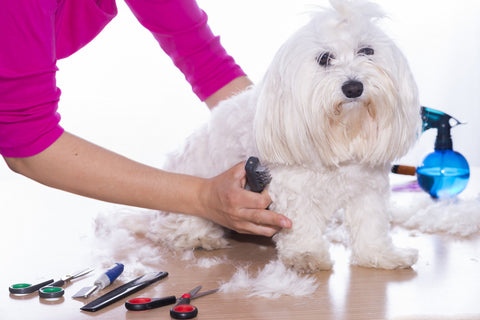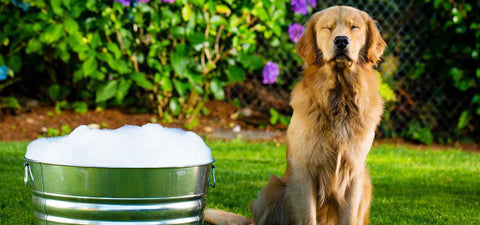Introduction
Begin by explaining the importance of breed-specific grooming. Highlight how different breeds have unique grooming needs based on their coat type, size, and lifestyle. Emphasize the benefits of proper grooming, including maintaining a healthy coat, preventing health issues, and ensuring the dog’s overall well-being.
Understanding Different Coat Types
1. Short Coats
- Characteristics: Describe the characteristics of short-coated breeds, such as a smooth, close-lying coat that sheds moderately.
- Examples: Mention breeds like Beagles, Boxers, and Dachshunds.
- Grooming Needs: Explain the basic grooming needs, including regular brushing to remove loose hair and bathing as needed.
2. Double Coats
- Characteristics: Describe the two-layered coat consisting of a dense undercoat and a weather-resistant topcoat.
- Examples: Mention breeds like Siberian Huskies, Golden Retrievers, and German Shepherds.
- Grooming Needs: Discuss the importance of regular brushing to prevent matting and seasonal shedding management.
3. Curly and Wavy Coats
- Characteristics: Explain the unique texture of curly and wavy coats, which can be dense and prone to matting.
- Examples: Mention breeds like Poodles, Bichon Frises, and Portuguese Water Dogs.
- Grooming Needs: Highlight the need for frequent brushing, trimming, and regular professional grooming to maintain coat health.
4. Long Coats
- Characteristics: Describe the long, flowing coats that require extensive maintenance to prevent tangling and matting.
- Examples: Mention breeds like Shih Tzus, Yorkshire Terriers, and Afghan Hounds.
- Grooming Needs: Emphasize the importance of daily brushing, regular baths, and trims to keep the coat manageable and clean.

Grooming Styles for Popular Breeds
1. Poodle
- Breed Overview: Provide a brief overview of the Poodle, known for its intelligence and hypoallergenic coat.
-
Common Grooming Styles:
- Continental Clip: Describe this show cut, which involves shaving the face, feet, and base of the tail, with pom-poms on the legs and tail.
- Sporting Clip: Explain this practical style, featuring a short, even cut that’s easy to maintain.
- Grooming Tips: Discuss the importance of regular brushing to prevent mats and professional grooming every 4-6 weeks.
2. Shih Tzu
- Breed Overview: Provide a brief overview of the Shih Tzu, known for its long, luxurious coat.
-
Common Grooming Styles:
- Puppy Cut: Describe this popular style, where the coat is trimmed to the same length all over for easy maintenance.
- Topknot: Explain this traditional style, where the hair on the top of the head is gathered into a topknot.
- Grooming Tips: Highlight the need for daily brushing and regular trimming to keep the coat clean and free of tangles.
3. Golden Retriever
- Breed Overview: Provide a brief overview of the Golden Retriever, known for its friendly temperament and dense double coat.
-
Common Grooming Styles:
- Natural Look: Describe this style, which maintains the natural length of the coat with minimal trimming.
- Trimmed Ears and Feet: Explain the practice of trimming the hair around the ears and feet for a neater appearance.
- Grooming Tips: Discuss the importance of regular brushing to manage shedding and keeping the coat clean and healthy.
4. Yorkshire Terrier
- Breed Overview: Provide a brief overview of the Yorkshire Terrier, known for its silky, long coat.
-
Common Grooming Styles:
- Show Cut: Describe this style, where the coat is kept long and straight, often requiring daily maintenance.
- Puppy Cut: Explain this practical style, where the coat is trimmed short all over for easy care.
- Grooming Tips: Highlight the importance of regular brushing, trimming, and using high-quality grooming products to maintain coat health.
5. German Shepherd
- Breed Overview: Provide a brief overview of the German Shepherd, known for its versatile working abilities and double coat.
-
Common Grooming Styles:
- Natural Look: Describe the style of maintaining the coat’s natural length with regular brushing.
- Seasonal Shedding: Explain the need to manage shedding with frequent brushing during seasonal changes.
- Grooming Tips: Emphasize the importance of regular grooming to manage shedding and keep the coat healthy.

Professional Grooming vs. DIY Grooming
1. Professional Grooming
- Benefits: Discuss the benefits of professional grooming, including expertise in breed-specific styles, access to professional tools, and a stress-free experience for the dog.
- Frequency: Provide recommendations on how often different breeds should visit a professional groomer.
2. DIY Grooming
- Benefits: Highlight the benefits of grooming at home, including cost savings and the ability to groom the dog more frequently.
- Tools and Techniques: Discuss the essential tools needed for DIY grooming and provide basic techniques for different coat types.
Seasonal Grooming Considerations
1. Summer Grooming
- Keeping Cool: Explain the importance of keeping the dog cool in the summer with shorter trims and more frequent baths.
- Sun Protection: Discuss the need for sun protection, especially for dogs with lighter coats or exposed skin.
2. Winter Grooming
- Maintaining Warmth: Highlight the importance of maintaining a longer coat in the winter to keep the dog warm.
- Paw Care: Discuss the importance of caring for the dog’s paws, including trimming the hair between the toes and using paw balms to protect against ice and salt.
Grooming Tips for Special Needs Dogs
1. Senior Dogs
- Gentle Handling: Explain the need for gentle handling and shorter grooming sessions for senior dogs.
- Special Products: Recommend using products designed for sensitive skin and avoiding harsh chemicals.
2. Dogs with Allergies
- Hypoallergenic Products: Suggest using hypoallergenic grooming products to minimize the risk of allergic reactions.
- Frequent Baths: Discuss the importance of more frequent baths to remove allergens from the coat.

Grooming Tips for Different Coat Colors
1. White and Light-Colored Coats
- Stain Prevention: Explain how to prevent and treat stains, particularly around the eyes and mouth.
- Brightening Shampoos: Recommend using brightening shampoos designed for light-colored coats to keep the coat looking fresh and clean.
2. Dark and Black Coats
- Shine Enhancement: Discuss the importance of using conditioning products to enhance the shine of dark and black coats.
- Avoiding Dullness: Explain how to prevent the coat from becoming dull by using high-quality grooming products and regular brushing.
Conclusion
Summarize the key points about grooming styles for different dog breeds, emphasizing the importance of breed-specific grooming to maintain the health and appearance of the dog’s coat. Highlight the benefits of regular grooming, whether done professionally or at home, and the impact it has on the dog’s overall well-being.
Call to Action
Encourage readers to start implementing these grooming tips and to share their experiences or additional tips in the comments section. Invite them to subscribe to the blog for more breed-specific grooming tips and advice.
